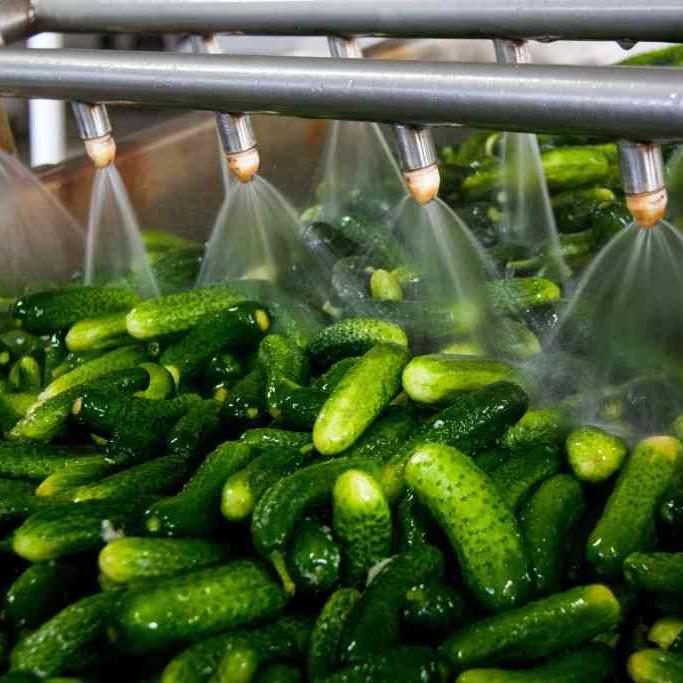Bacterial growth during water supply poses a threat to drinking water safety and public health. Flow cytometry (FCM) total cell count (TCC) has been demonstrated to be an ideal choice for compliance monitoring and risk assessment of drinking water distribution systems (DWDSs) [1]. As a cultivation-independent method, FCM is rapid, accurate and easy to perform, whereas conventional heterotrophic plate count (HPC) is generally restricted by its sensitivity as HPC only detects cultivable microorganisms, which only account for a very small part of the total viable microorganisms living in water.
Another advantage of FCM is that it can easily distinguish low nucleic acid content (LNA) and high nucleic acid content (HNA) bacterial communities by simply setting a gate on the fluorescence intensity. It is commonly supported by scientific research that LNA cells are inactive ones, while HNA cells are actively growing [2]. Moreover, researchers suggest that the number of HNA bacteria works as a better indicator of bio-growth and bacterial metabolic activity in water samples, which used to be measured by adenosine triphosphate (ATP) concentrations. This is because TCC and HNA measurement is more direct and more sensitive than ATP and enables the accurate quantification of even small changes in total biomass in aquatic environments which ATP could not detect [3]. Therefore, the analysis of TCC together with LNA and HNA information forms the bacterial fingerprint of a specific microbiological state of the water.
However, although being a powerful research tool, traditional FCM sets high entry barriers for users in industry. In order to get reliable and comparable results in every FCM measurement, instrument operators need to adhere to a stringent, reproducible staining protocol and determine a strategy for electronic gate setting [4]. In addition, standard flow cytometers require daily and weekly cleaning cycles and regular technical maintenance in order to do their work. That is why rqmicro developed rqmicro.COUNT which is a portable and easy-to-use flow cytometer. It is a plug-and-play system due to the measurement on single-use cartridges and a fully automated analysis with preprogrammed gate settings. What is even better is the rqmicro cloud platform, making it possible to remotely access reports, trends and data analysis and to receive email notification when immediate response is needed.
Decrypting the bacterial fingerprint of drinking water has never been so easy with on-site flow cytometry. New possibilities with the rqmicro.COUNT include:

Decentralized water quality monitoring in drinking water distribution systems

Advanced water microbiology research with easy-to-use flow cytometry

Optimized disinfection regimes and reduction of associated energy and chemical costs

Accelerated food and beverage quality control for faster product release

Time and cost savings by eliminating sample shipment and avoidance of bio-regrowth during shipping
References:
[1] N. Farhat, L.H. Kim, J.S. Vrouwenvelder, Online characterization of bacterial processes in drinking water systems. npj Clean Water 3, 16 (2020). https://doi.org/10.1038/s41545-020-0065-7
[2] P. Lebaron, P. Servais, H. Agogué, C. Courties, F. Joux. Does the high nucleic acid content of individual bacterial cells allow us to discriminate between active cells and inactive cells in aquatic systems? Appl Environ Microbiol. 2001 Apr; 67(4): 1775-82. https://doi.org/10.1128/AEM.67.4.1775-1782.2001
[3] G. Liu, E. J. Van der Mark, J. Q. J. C. Verberk, J. C. Van Dijk, Flow cytometry total cell counts: a field study assessing microbiological water quality and growth in unchlorinated drinking water distribution systems, BioMed Research International, vol. 2013, Article ID 595872, 10 pages, 2013. https://doi.org/10.1155/2013/595872
[4] E.I. Prest, F. Hammes, S. Kötzsch, M.C.M. van Loosdrecht, J.S. Vrouwenvelder, Monitoring microbiological changes in drinking water systems using a fast and reproducible flow cytometric method, Water Research, Volume 47, Issue 19, 2013, Pages 7131-7142, ISSN 0043-1354, https://doi.org/10.1016/j.watres.2013.07.051